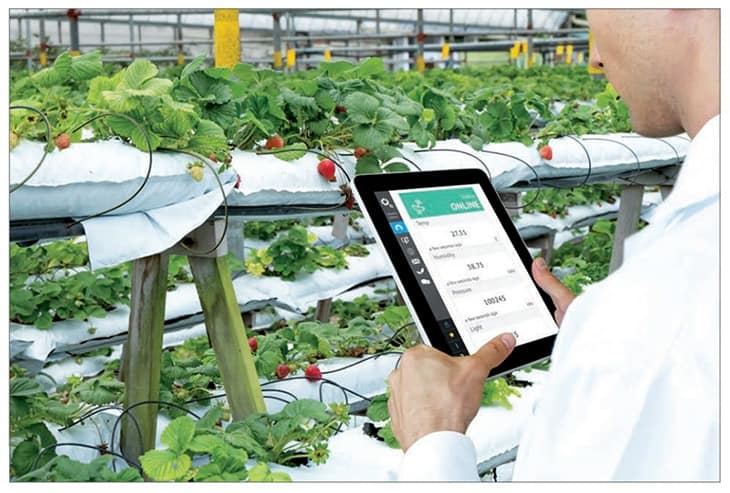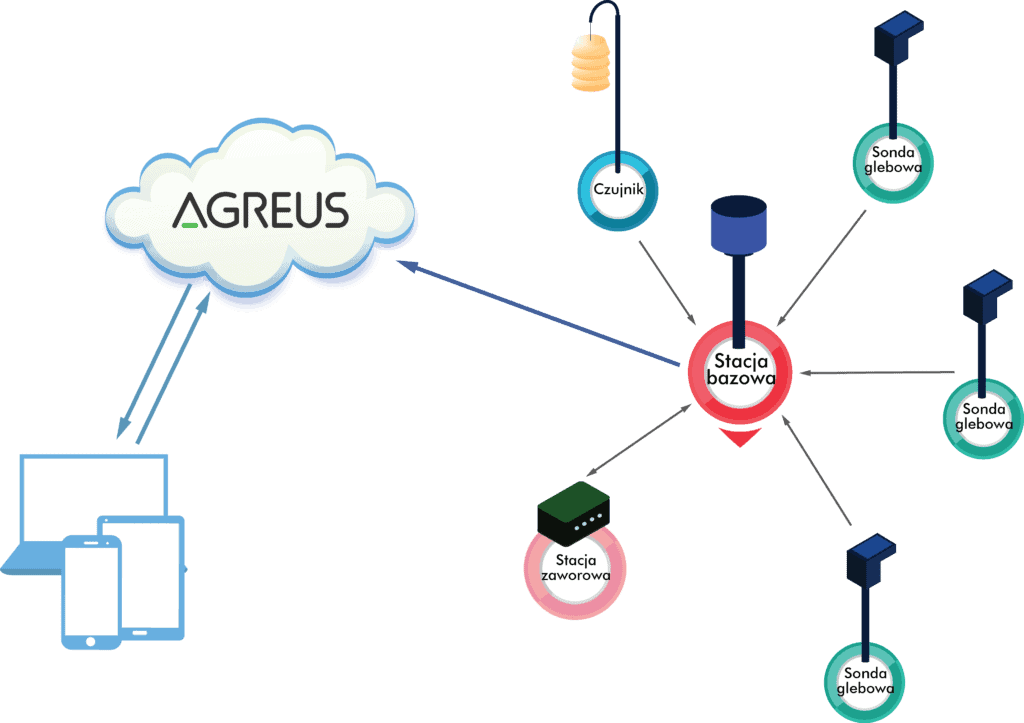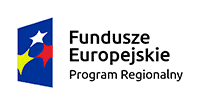The industry digitization initiative, called Industry 4.0, is already well-established in the minds of those interested in the development of modern entrepreneurship. Despite the fact that agriculture is rarely treated equally with other industrial areas, in fact in the modern agricultural activity all the rules for running a business like in other branches of the economy apply.
„On the one hand, the market for intelligent irrigation solutions is driven by joining of cultivation areas, the need for professional solutions and the need to rationalize water consumption due to the new policy of protecting the State’s water resources to be implemented. On the other hand, there is a lack of modern, simple to use solutions, the price of which would be acceptable, and above all easily scalable, which signi cantly reduces the barrier to entry of new users – our clients” – notes Jerzy Białousz, President of the INVENTIA
The decision processes are carried out in the same way, or they should be, guaranteeing the best results at the lowest costs and involved means. The effects of good or bad decisions are also verified in the same way. To make accurate business decisions, reliable information is necessary, and these can only be obtained by trustworthy data. This leads us to the issue of obtaining data in production processes, including agriculture.

If we look at the situation of obtaining data in various branches of industry, we can notice that it is strongly dependent on the level of applied automation, and this is not optimistic for agricultural producers. The lack of highly automated processes and the relatively low technical culture of the machines and devices used do not give a chance to massively collect multi-source data, which are the basis for effective processing into useful information. Of course, more and more is being said about SmartFarming, agriculture that benefits from the most modern techniques, combining agrotechnical work with information controlling the operation of machines by the cultivation needs to be established by advanced algorithms. Technologies that we can conventionally call „Agriculture 4.0”, however, concern in the vast majority of large-area crops of cereals and other plants that form the basis for feeding the ever-increasing population of the Earth’s. In a different situation, there are branches of agriculture in which production takes place on fruit or vegetable plantations. In this case, metering does not exist, and the methods used to support agrotechnical activities are based on many years of experience of the persons conducting operations and on the meteorological data published for particular crop regions. Due to the very large diversity of terrain and soil conditions of cultivated areas, it is not possible to obtain a proper correlation between the published data and the actual situation at the place of cultivation. Decisions taken on this basis may be subject to a large error, resulting in crop losses or significant expenditure on unnecessary agrotechnical activities.
However, there is a chance that this situation will change. There are technical measures to precisely determine the climate and soil situation in large areas of crops. This is possible due to the emergence of technologies in the field of Industrial Internet of Things (IIoT), allowing for long-term use of wireless, distributed, battery-operated or solar-powered sensors. Distributed sensors to measure soil or climate parameters can become a source of data for systems supporting agrotechnical decisions in areas covered by metering. The AGREUS system is to serve this purpose.
The AGREUS system is the result of the combination of Inventia experience in the field of wireless telemetry as well as the knowledge and skills we gain by working with the Irrigation Plant of the Agroengineering Department of the Institute of Horticulture in Skierniewice, headed by prof. Waldemar Treder. The cooperation aims to create a new quality of supporting decisions in irrigation and plant protection. Ultimately, the AGREUS system will include many types of environmental and technical sensors. Data from these sensors will be sent to the integrating portal and will be transformed to information supporting decision makers. The monitoring will cover the temperature and humidity of the air and soil, i.e. the basic parameters necessary to determine the needs of plants for water in the irrigation process. Also, data on rainfall, wind speed, and insolation will be monitored, or obtained from third sources, which will increase the precision of agrotechnical activities.
Historically, the AGREUS system appeared as a project solving problems with proper irrigation of both agricultural crops and home gardens. Therefore, the measurements of soil moisture and weather conditions as well as irrigation control became the basis. By assumption, the system should solve many of the inconveniences of current irrigation control systems, such as the need to run valve control cables and the poor possibilities of creating irrigation patterns, usually boiling down to sequential run of individual sections. Few systems allow for correlation of irrigation with weather and rainfall, and so far it is difficult to find a system that allows creating flexible schedules and automatically referring to measured soil moisture or data on the level of recent or forecasted rainfall. Of course, the situation on the agricultural solutions market is dynamic, but it seems that the available so-called Smart systems are not able to meet all users’ expectations. It is even more important that the chosen information acquisition technology allows extending the application of the AGREUS system to initially unplanned possibilities.
„The concept of distributed soil, climate and irrigation control system proposed by Inventia gives a unique possibility of using sensors in quantities and places suited to the needs of the recipient – the client will be able to start the adventure with the system from one sensor and will be able to expand the system practically without any restrictions, and the data will be stored in the cloud with easy access from your computer or your smartphone. The combination of sensors in the radio network frees the user from the cumbersome wiring” – indicates prof. Waldemar Treder.

The heart of the AGREUS system is the base station transmitting data from/to distributed terminals, that is creating a network of sensors and execution modules. The transmission takes place using a long-range wireless radio network – LoRa. This technology, depending on the terrain conditions, allows covering with its operation a large area of crops with low energy consumption, which is a critical parameter for battery-powered devices. Also, the AGREUS base station connects to the Internet either using the Wi-Fi of the existing local network or independently via GSM (3G, LTE) or optionally via Ethernet cable connection. The Internet connection allows you to send the collected data to the AGREUS Portal operating in the cloud. Transmitted data is collected on individual accounts of System users, becoming the basis for ongoing analyzes and generated reports.
The AGREUS portal enables managing both connected terminals and users, allowing the creation of personalized user profiles within the created account with different levels of access rights. Automated adding additional terminals using NFC and the flexibility of configuration of information screens that can combine current and historical data, facilitates the use of information collected in the field. It is not the purpose of this article to accurately describe the configuration options and functionality of the solution being prepared, but it should be said that the user will have access to various forms of information sharing, including simple numerical data presentation, current and historical graphs and presentation of data on the basis of an interactive map or customized graphics. Such diversity of possibilities will surely meet the users’ acceptance allowing to tailor the presentation of information to individual needs.
The basic form of using the AGREUS portal will be accessed from mobile devices, which will certainly facilitate the use of the system. Data for mobile devices will be downloaded from the portal in real time, making the information available the basis for making decisions. Portal dashboards, alarms, and reports received via e-mail or SMS are additional factors that allow the AGREUS portal to be treated as an irreplaceable source of data about cultivated crops.
In addition to access through the cloud, local access will also be possible, allowing the dispatching and viewing of irrigation orders as well as the presentation of the current and, to a limited extent, historical collected climate parameters. By default, local access will be less flexible than that offered on the portal, which is the result of the limited computing resources of the base station.
As the first elements of the AGREUS system, despite the integrating base station AGB 2000, the modules will be available to implement the original idea, i.e. intelligent irrigation control, based on soil moisture measurements and weather parameters. They will be:
AM-100
The profile moisture, temperature, and soil salinity sensor allowing to measure parameters on 1, 2 or 3 levels, to precisely determine the method and level of irrigation necessary to maintain the optimal condition of crops. The sensor will also allow monitoring the air temperature on the surface, providing information to support warning against frost.
AM-110
A digital input module that allows the connection of a pressure switch and a water meter to assess the correctness of the irrigation process.
AM-411
The execution module allows independent control of 4 valves of the irrigation system activated by 24 VAC.
Also the following modules will be available:
AM-200
Temperature and humidity measurement module in greenhouses, cold stores or mushroom cellars, allowing to create a system for monitoring the greenhouse conditions, independent from the control of environmental parameters.
AM-401
The 230 VAC / 10 A relay output module allows controlling the operation of various mains-powered devices, including lighting.
AM-421
The executive module allows independent control of 4 irrigation system valves using 9 VDC. The module is battery-powered. The solution is used when it is not possible to supply valves from a 24 VAC voltage source.
Our plans include the creation of many other remote sensors and execution modules allowing not only for climate monitoring and irrigation control but also for the physical protection of equipment and warning against undesirable phenomena. By definition, the system is prepared for sending data of various types, which is greatly assisted by the MQTT protocol used for transmission purposes, the emerging standard of the Internet of Things. The use of MQTT is not only to ensure the privacy, integrity, and security of data sent by native elements of the AGREUS System but also to make possible the products from other manufacturers to be integrated with the AGREUS portal using this protocol. This means opening to unlimited possibilities of extending the functionality of the AGREUS system, whose future applications will be limited only by the imagination.
When developing the project, we use EU subsidies under the program Measure RPO WM 1.2 Research and development activities of enterprises, project number RPMA.01.02.00-14-5663 / 16-00: “Development of an innovative system for measuring distributed climate and soil parameters as a tool for optimization of irrigation, plant protection, and agrotechnical works”



